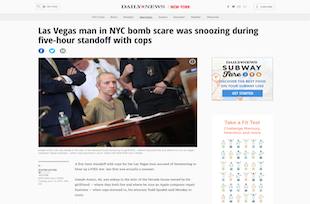Service Oriented Law Firm
WE'RE A BOUTIQUE LAW FIRM.
Over 50 Years Experience
TRUST 50 YEARS OF EXPERIENCE.
Multiple Offices
WE SERVICE CLIENTS NATIONWIDE.
WE'RE A BOUTIQUE LAW FIRM.
TRUST 50 YEARS OF EXPERIENCE.
WE SERVICE CLIENTS NATIONWIDE.







Counterfeiting money and trafficking in fake goods are serious federal crimes that can land you in prison for many years. But why are they illegal? What exactly do the laws say? And what defenses might you have if accused? Let’s break it down.
First, some background. The U.S. Secret Service—yeah, the guys who protect the president—are actually in charge of investigating financial crimes like counterfeiting. They take it real serious. Since old-timey paper money was easier to fake, they’ve been at it for a long time, going back to the Civil War.
These days, it’s rare to see fake paper bills. But now there’s lots of fake credit cards, checks, and other financial documents that scammers use to rip folks off. The internet made it easier than ever to buy and sell this stuff. So the Secret Service stays busy!
When you hear “counterfeiting,” you probably think of fake cash. But federal law bans making or using any kind of forged financial document. Your defense can’t be “it wasn’t money, just a check!” Nope, you’re still in trouble.
The main law is 18 U.S. Code § 471. It says that anyone who falsely makes, alters, forges, or counterfeits any kind of U.S. money, coins, banknotes, checks, bonds, or other securities can get up to 20 years in prison. That’s serious time!
There’s also a law against possessing fake financial documents: 18 U.S. Code § 472. Just having the stuff on you is illegal, even if you weren’t the one who made it. You can get up to 15 years for this.
Bottom line: Don’t make fake money or documents. Don’t use them. And for goodness sake, don’t carry them around. You’re asking for a one-way ticket to the big house.
It’s not just financial documents. Trafficking in counterfeit versions of any product is illegal. We’re talking fake designer clothes, watches, purses, you name it. If it’s an expensive brand, you can bet someone’s making knock-offs.
This is a big business for organized crime. The United Nations says trafficking in counterfeit goods brings in $250 billion a year for transnational gangs. And it’s getting worse every year.
In the U.S., the main law is 18 U.S. Code § 2320. It bans trafficking in counterfeit goods or services. If the fakes are worth more than $2,500, you can get 10 years in prison. Way more than that, and you can get up to 20 years.
But it’s not just about money. Counterfeits can be dangerous if they’re fake versions of food, drugs, car parts, or other products. So there are higher penalties if the fakes risk someone’s health or public safety.
Let’s say you get busted for counterfeiting. Are there any defenses that could get the charges dropped or reduced? Here are some options:
Your best bet is to convince the prosecutor you’re just a small fish who got duped. They’ll often cut deals with low-level offenders to go after the big guys running the show. But you’ll still likely serve some time.
When millions are being made, the government takes counterfeiting very seriously. Don’t think you can just get away with a slap on the wrist. Federal prison is very real possibility.
Penalties for counterfeiting keep getting tougher. In 2004, Congress passed the Anti-Counterfeiting Consumer Protection Act. It increased the maximum sentences for trafficking in fakes to 20 years for individuals and $5 million in fines for companies.
More recently, the Stopping Trafficking, Illicit Flows, Laundering and Counterfeiting Act was introduced in 2020. It aims to crack down even more on counterfeits sold online and increase penalties for selling dangerous fakes that risk public health and safety.
The message is clear: The feds will keep passing new laws to combat counterfeiting and fake goods. Don’t think you can just move your operation online or overseas to avoid trouble. Technology made counterfeiting easier, but it also made it easier to catch the crooks.
Look, we get it. Times are tough. Making some extra cash by making or selling fake stuff sounds tempting. But trust us, it’s just not worth the risk.
You may end up being a small fry in a huge criminal enterprise you knew nothing about. And the penalties are no joke. We’re talking serious prison time and massive fines here.
At the end of the day, counterfeiting harms real people and real companies. It costs the U.S. economy between $200-$250 billion every year according to the Department of Homeland Security[3]. And it often funds organized crime, terrorism, and child labor.
So do yourself a favor. Take a hard pass on making or selling any kind of counterfeit goods. It’s just not worth it.

Very diligent, organized associates; got my case dismissed. Hard working attorneys who can put up with your anxiousness. I was accused of robbing a gemstone dealer. Definitely A law group that lays out all possible options and best alternative routes. Recommended for sure.
- ROBIN, GUN CHARGES ROBIN
NJ CRIMINAL DEFENSE ATTORNEYS